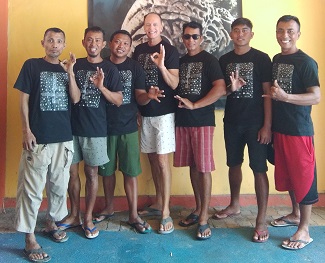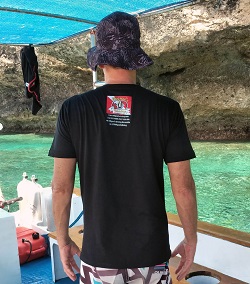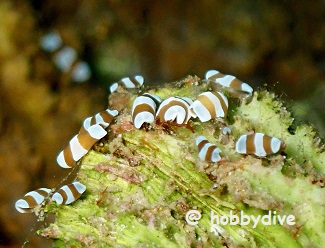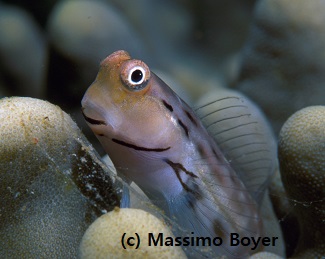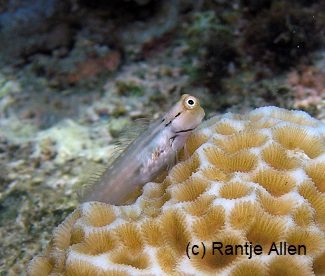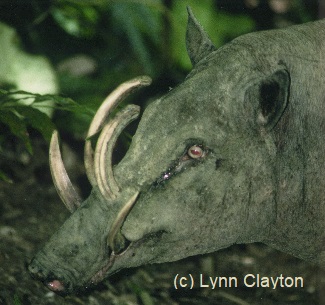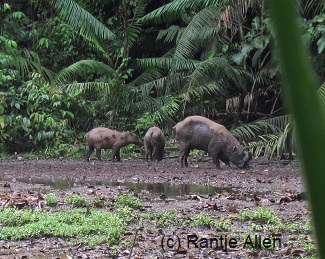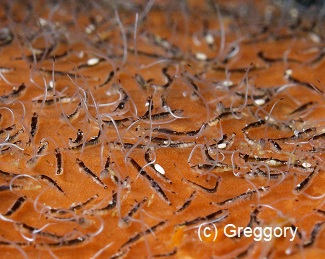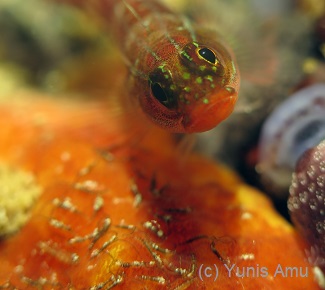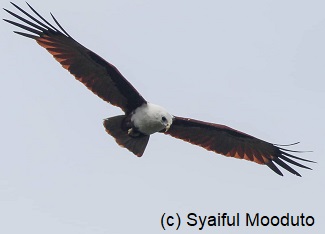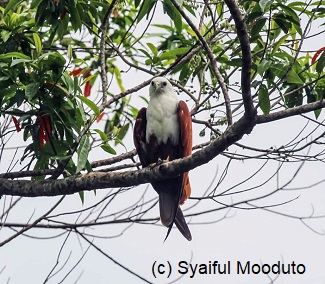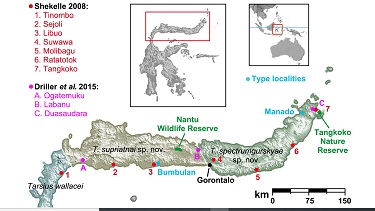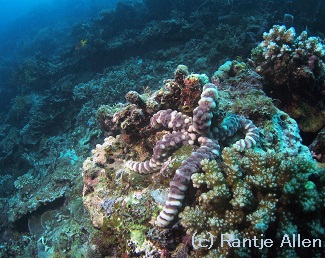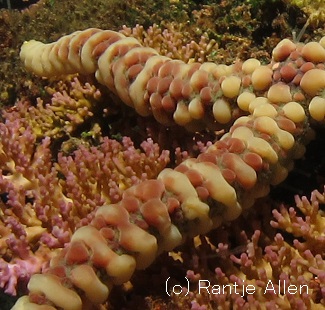Loading content - please wait...
Twenty-year anniversary T-shirt
Twenty-year anniversary souvenir T-shirts are now available for purchase. Miguel’s Diving opened in 2003. So, we celebrate our twentieth dive season in style.
The Early Years
After surveying the Gorontalo area for about two years, we decided to open diving. The dive sites we discovered were spectacular. Mr. Rantje, our pioneer staff, tells the story of his first dive from the shore. At the end of the dive, he encountered a pod of False killer whales (Pseudorca crassidens). Large cetaceans remain part of the marine environment in Gorontalo. Last month in December 2022, staff spotted a male orca (Orcinus orca) surfacing twice while divers were below.
In the early years, Gorontalo lagged in development. It had recently become a separate province from North Sulawesi. That happened on 5 December 2000. Only an occasional flight from Manado was available by prop plane. Limited internet required dial-up. Cell phone towers were not yet built. Neither were any star-rated facilities. Surprisingly, the bentor had yet to be invented!
Big Steps along the Way
In 2006 with funding from Gorontalo’s first Indonesian governor, Bapak Fadel Muhammad, Miguel’s Diving published the coffee table book Gorontalo: Hidden Paradise. There was also an Indonesian version called Gorontalo: Surga yang Tersembunyi. At that time, the dive center ordered its first custom-built speed boat.
In 2009, the company purchased the last remaining empty land on the Bone River. This location would provide a safe location to dock our boats. Also, it provided direct access to the ocean. During the following years, we would build the first floor of the dive center and a private dock. In 2012, a second-floor apartment was added. Miguel’s Diving added its large, second speed boat in the same year.
Over time
, Miguel’s Diving staff helped establish the Olele Village Marine Reserve. It opened in 2007. Local government and villagers worked together to safeguard the wonderful dive sites there.Twenty-year Anniversary
The fall of 2022 marks Miguel’s Diving twentieth dive season. Dive season in Gorontalo is from November to April. Despite the challenges of the pandemic, we are still operating. Our great staff have maintained all our facilities. In fact, they renovated both speed boats for our twentieth season. Also, in celebration of our twenty-year anniversary, we have new souvenir T-shirts. These can be purchased directly at the dive center.
To celebrate our twentieth season, please make your reservations to dive with us at Miguel’s Diving.





